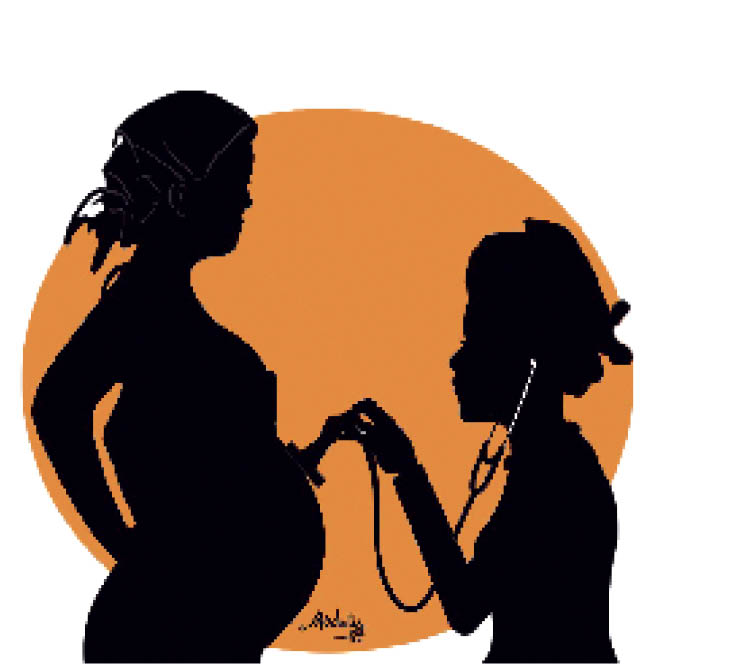Let’s talk about Eclampsia during COVID-19 pandemic
A respectful greeting to our weekly doctor and Daily Trust Newspaper that provides the platform to one of the most strategic and important health columns. I commend you for talking about depression and deep vein thrombosis during the COVID-19 lockdown. Please can we talk about Eclampsia which is a medical emergency that could also happen during […]

A respectful greeting to our weekly doctor and Daily Trust Newspaper that provides the platform to one of the most strategic and important health columns. I commend you for talking about depression and deep vein thrombosis during the COVID-19 lockdown. Please can we talk about Eclampsia which is a medical emergency that could also happen during this period.
Nancy V.
Thanks, Nancy, for your kind words and question. You are right when you said Eclampsia is a medical emergency and it could indeed happen during the COVID-19 pandemic. Let me start by explaining Preeclampsia which is a condition that pregnant women can get. It is marked by high blood pressure accompanied with a high level of protein in the urine. Women with preeclampsia will often also have swelling in the feet and legs and hands.
• Preeclampsia, when present, usually appears during the second half of pregnancy, generally in the latter part of the second or in the third trimesters, although it can occur earlier.
• Eclampsia is the final and most severe phase of preeclampsia and occurs when preeclampsia is left untreated. In addition to the previously mentioned symptoms, women with Eclampsia often have seizures (fitting or convulsion).
• The exact causes of preeclampsia are not known, although some researchers suspect poor nutrition, high body fat or insufficient blood flow to the uterus as possible causes. Preeclampsia is most often seen in first-time pregnancies and women over 40.
Some of the risk factors are:
1. A history of chronic high blood pressure prior to pregnancy
2. Previous history of preeclampsia
3. A history of preeclampsia in mothers or sisters
4. Pregnancy with more than one baby
5. History of diabetes, kidney diseases etc
What are the Symptoms and Signs of preeclampsia:
1. High blood pressure
2. Body swelling as well as protein in the urine
3. Rapid weight gain caused by a significant increase in bodily fluid
4. Abdominal pain and severe headaches
5. A change in reflexes and reduced output of urine or no urine
6. Blood in urine and dizziness
7. Excessive vomiting and nausea
What causes Eclampsia?
Eclampsia often follows preeclampsia, which is characterised by high blood pressure occurring in pregnancy and, rarely, postpartum. Other findings may also be present such as protein in the urine. If preeclampsia worsens and affects brain, causing seizures (fitting), then one has developed eclampsia.
• Preeclampsia is when the blood pressure, or the force of blood against the walls of the arteries, becomes high enough to damage the arteries and other blood vessels. Damage to the arteries may restrict blood flow. It can produce swelling in the blood vessels in the brain and to the growing baby. If this abnormal blood flow through vessels interferes with the brain’s ability to function, seizures may occur.
• Preeclampsia commonly affects kidney function. Protein in the urine, also known as proteinuria, is a common sign of the condition.
• Typically, kidneys filter waste from the blood and create urine from these wastes. However, the kidneys try to retain nutrients in the blood, such as protein, for redistribution to the body. If the kidneys’ filters, called glomeruli, are damaged, protein can leak through them and excrete into the urine.
What are the treatment options?
The only real cure for preeclampsia and eclampsia is the birth of the baby. Mild preeclampsia can be managed with careful hospital or in-home observation along with activity restriction. The treatment for severe preeclampsia may require more emergency treatment that is delivery of the baby, irrespective of the baby’s age.
Other treatments include:
1. Use of magnesium sulphate to prevent eclampsia-related fitting
2. Use of antihypertensive drugs to manage severe elevations of blood pressure
3. Monitoring fluid intake.
